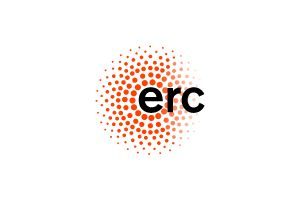Funding Your Project Mortgage or Line of Credit
Whether you’ve lived in your home for decades or are just about to start your journey as a homeowner, the idea of customizing your home to fit your style and preferences, as well as necessary repairs to aging homes, can be both exciting and daunting. The exciting part comes without question, but the daunting components often revolve around money.
In addition to paying $9,000 in unavoidable costs and basic maintenance associated with homeownership every year, the typical U.S. homeowner dishes out an additional $3,021 per year on home improvements, according to the Zillow Group Consumer Housing Trends Report 2017.
And wanting to make some updates around the house isn’t uncommon: 77 percent of homeowners think their home could use some sprucing up. Most notably, they are interested in painting the inside of their home (25 percent), improving a bathroom (22 percent), landscaping (21 percent) and replacing the flooring (21 percent).
If you’re wondering how to fund your own home improvements, you’re not alone. Nearly half of homeowners who plan to make improvements struggle with how they’ll pay for them. While most homeowners pay for improvements with either cash or debit (57 percent) or with a credit card they pay off immediately (27 percent), others get creative in order to gather up enough money to create their dream homes. Here’s a look at some of those ways, which might help you build your dream home, too.
1. Refinance Your Mortgage
Refinancing your home is one way you can stash away extra cash every month to pay for home renovations. Depending on your current interest rate, you might be able to refinance at a lower interest rate and/or for a longer loan term, which would lower your monthly mortgage payment. So, you could set aside the difference until you’re ready to jump into renovations.
If you have enough equity in your home, an even faster way to get your refinance to pay for your next big project is with a cash-out refinance. Going this route, you refinance your existing loan for a new loan with an amount that’s higher than the amount you owe. That way, you pay off your original mortgage and have cash left over to remodel your home to your heart’s content.
It’s a big decision to refinance your mortgage, and of course you’ll want to consider the cost of the refinance to see if it’s worth it in the long run. To help decide if refinancing is right for you, try our refinance calculator to estimate your savings, and then check the latest refinance rates from multiple lenders, anonymously.
2. Get a Home Equity Line of Credit (HELOC)
If you already have a low rate on your first mortgage, or you’ve already paid off your loan, refinancing may not make sense for you. However, a HELOC is an option to tap into your equity to pay for a home renovation without refinancing. It works a lot like a credit card in the sense that it has a set limit that you can borrow against. However, since the loan is secured by your home, you’ll get a much lower interest rate than a credit card. A HELOC is typically an adjustable rate loan but will allow for fixed-rate advance options if you prefer the stability of a rate that won’t change.
One of the biggest benefits to HELOCs in the past has been that the interest paid on the HELOC is tax deductible up to $100,000. However, under the recently passed tax law, interest free HELOCs come with a few stipulations, with the most notable circumstance being that the money is used to pay for home improvements. And that’s good news for you if you’re planning on using this money to pay for your next home improvement project.
3. Take Out a Home Equity Loan
A home equity loan is another option for homeowners to tap into their equity to pay for renovations without refinancing their entire mortgage. Unlike a HELOC, which is a line of credit that you can borrow against as needed, this type of loan requires you to take out all the cash at one time. But since it is a fixed rate loan, the interest rate on a home equity loan is typically higher than an adjustable rate of a HELOC. Home equity loans are also commonly called “second mortgages” because many homeowners get them in addition to their first mortgage. However, you don’t need a first mortgage to get a home equity loan.
It can be a tough choice to decide whether a home equity loan, cash-out refinance, or HELOC is best for you. As with any new loan, consult with a lender to see which one makes the most sense for you.